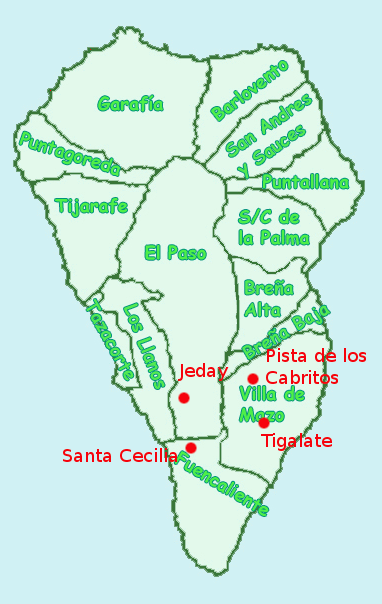Update on the Fire

The fire started at Tigalate, and the main area of concern is currently between Santa Cecilia and Jeday
Well I got one thing wrong in the last post. There was a light breeze here, but up on the ridge where they were fighting the fire, it was blowing a gale up to 65 km/h - exactly the worst sort of weather for fire-fighting.
However, I was right that the Princess Hotel and Cancajos are safe. In fact that's where they took the evacuees. About 100 are still in the Princess, and 115 in the army barracks at Cancajos. The rest are staying with friends and family.
So far, about 1,500 hectares have been burnt - mostly pine forest. If you were planning on walking or mountain biking in the south of the island - well it won't be so pretty (although it will recover). So far, the north of the island is fine.
And now the good news. The wind has dropped, and the weather forecast is for the temperatures to drop 10-15ºC within 24-48 hours. At the moment, they're trying to use the lava flows at Jeday and Pista de Los Cabritos as natural fire breaks, and to hold it there, or at least have a much smaller front to the fire. We now have helicopters from Tenerife and Gran Canaria helping out, and two planes are on their way from the mainland.
Labels: fire, fuencaliente, La Palma, Mazo
Bookmark with:
 Del.icio.us Del.icio.us
|
 Digg Digg
|
 Reddit Reddit
|
 Facebook Facebook
|
 Furl It Furl It
|
 Newsvine Newsvine
|
|





